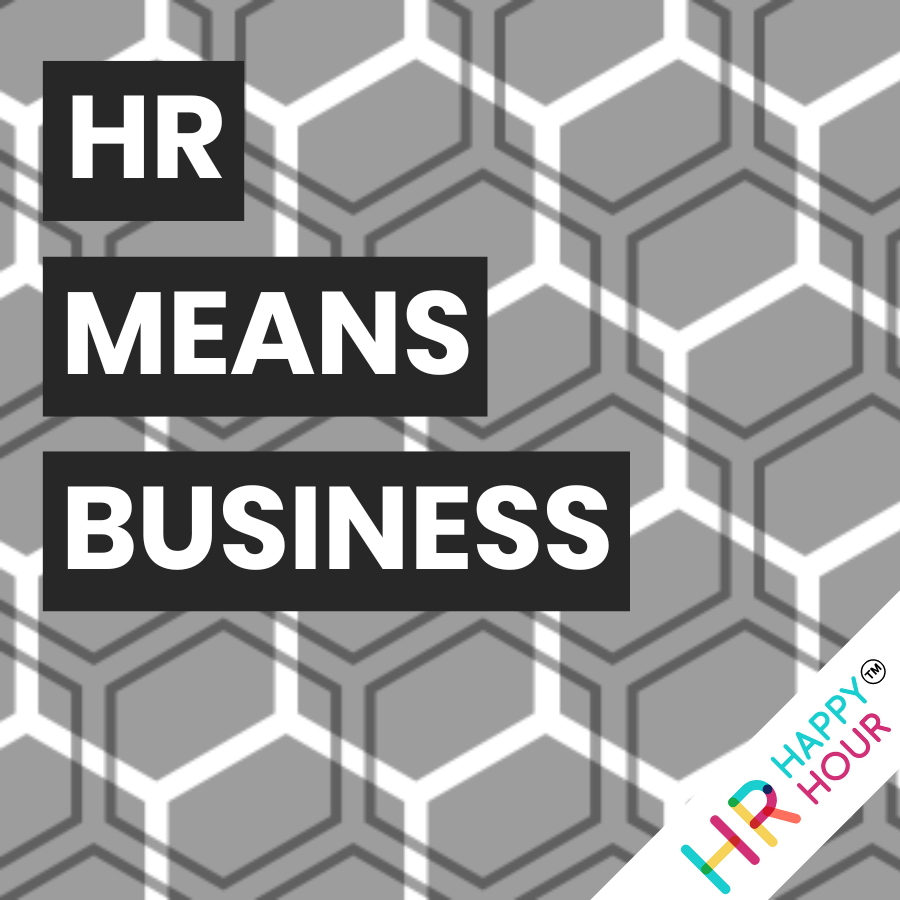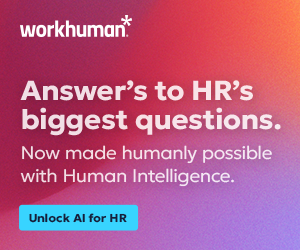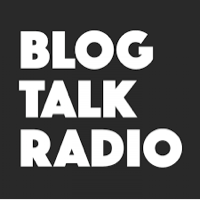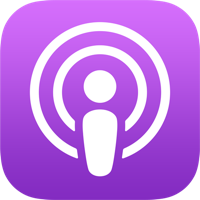Overcoming the Roadblocks to a Better Employee Experience
Hosted by

Mervyn Dinnen
Analyst, Author, Commentator & Influencer
About this episode
Overcoming the Roadblocks to a Better Employee Experience
Host: Mervyn Dinnen
Guest: Kate Featherstone, Product Manager at MHR
In this episode, Mervyn Dinnen talks to Kate Featherstone, Product Manager at HR Software specialists MHR, about their latest research into improving employee experience.
During the conversation they discuss:
- Why employee experience is so important
- Best ways to find out how your people feel about their experience
- Topline research findings
- What are organisations doing well and where might they be failing
- How can companies use technology to better understand the experience their people are getting
- The role of annual surveys and potential pitfalls when interpreting results
- Using sentiment analysis
Learn more here
Thanks for listening! Remember to subscribe to all of the HR Happy Hour Media Network shows on your favorite podcast app!
Transcript follows:
Mervyn Dinnen 0:17
Hello, and welcome to the HR Means Business podcast, which is part of the HR Happy Hour Network. I’m your host, Mervyn Dinnen. Today, I’m going to be talking about some recent research that I’ve seen into employee experience, I think you probably would have gathered from what I put online that to me employee experience, employee engagement is the number one topic this year, most organizations I speak to, are concerned about how they can really kind of retain and engage their people. And so I was interested in seeing some research done by MHR here in the UK, into employee experience, how people are feeling and maybe how companies can get closer to the way their people feel. And so I had invited today, Kate Featherstone from MHR to talk to us a bit about the research. Kate, welcome to HR Means Business. Would you like to introduce yourself and tell people what it is you do?
Kate Featherstone 1:11
Of course, thank you very much for that. It’s great to be here. So yes, I’m Kate. I’m a product manager at MHR. So MHR, we create HR Payroll, and finance software. And I’m a part of the product design team. So I’m always looking into business problems specifically for HR teams and their employees to see how we can develop software to support HR professionals and their organization.
Mervyn Dinnen 1:35
So employee experience, what was I suppose the driving factors behind you doing this research? Is this what you’re hearing, obviously, from your clients? Or, you know, is it the discussions around kind of the workplace?
Kate Featherstone 1:51
Yeah, certainly. So the research report was put together on a back of a survey that we conducted. So we surveyed 250 HR professionals across the UK and Ireland. And we really wanted to find out what HR teams were doing to create a great employee experience, as you mentioned, you know, it’s been a hot topic at the moment. But we really wanted to find out what organizations are doing to capture this, how are they talking to their employees? Are they conducting surveys? Are they gathering feedback? Are they not doing any of this? How are they empowering managers to do the same? So yeah, the report talks about a shift in expectations from employees now having a big focus around well being. And I think that’s where a lot of the employee experience focus has come from. So that’s what we really wanted to find out whether organizations were focusing on this as well as their employees.
Mervyn Dinnen 2:41
So what would you say for you? Well, that I suppose the main top line findings, I’ve got a few stats that we’ll talk about during the conversation. But in terms of I suppose the top line findings, what were the key ones? And what ones may be surprised?
Kate Featherstone 2:59
Yeah, so the key findings from the research that we found that, obviously, we know communication is really key to understanding your employees. But we found that HR teams are often so busy and can’t dedicate the time to get feedback from their employees and really understand what is going on inside of their organization. So like running an employee survey, you know, could be a employee Net Promoter survey satisfaction survey, it’s often seen as a large administrative task, which is a lot of effort to send out to get employees to complete it. So yeah, we found quite shockingly, that organizations aren’t doing that as much as we would think so. And, yeah, we just wanted to really investigate why and how we can help organizations to, to get to gather that feedback.
Mervyn Dinnen 3:45
I suppose one or two of the interesting things for me at the start were a huge kind of 86% of employees who said that they would leave a job, where they felt that their well being wasn’t supported or enabled, or there was maybe a lack of interest in it. So the top line findings case, showed that obviously, people leave jobs, if they feel their well being isn’t supported 50% leave to leave a manager. There was also a very high proportion, who won’t remain with the company if they feel they don’t have the right learning and development opportunities available to them. What, how are companies trying to use or possibly badly using technology or software to understand the experience that people get?
Kate Featherstone 4:37
I think that’s a really key point that we found from the survey is that learning and development side is not so strong within organizations. So as you mentioned, we found that 45% of organizations don’t have any kind of learning software in place. And 50% of organizations don’t use software for wellbeing management. And I think those numbers kind of speak for themselves and their organizations in that asked in what in where they see value. So they’re not getting enough feedback from their employees. And that kind of links to the point around surveys being a mammoth task for organizations to conduct. But there are tools out there which can be used to help a this, you know, we’ve got AI, natural language processing, this is all really important to analyze key trends and make the most out of the data. Because I think organizations where they are using systems and putting in learning and development, they’re mainly using it for performance management. So they’re looking at the performance side of things, goal tracking, hosting checkings, which is all really great. But they’re not making the most of the data that they’re capturing. So something that we found is that a high percentage of organizations are on the digital transformation journey. But they’re not always on top of the latest advancements within that technology, you could be using things like sentiment analysis to really analyze and pull out key trends rather than having to go into it and look into it yourself. Because I think that’s potentially some of the reasons why organizations aren’t aren’t running those surveys and running the learning programs they should be.
Mervyn Dinnen 6:13
Do you think there’s an element that, in some respects, they’re not collecting feedback? Because they don’t want to know the answer?
Kate Featherstone 6:22
Yeah, it could be that way. I think we found that a lot of organizations when they do run these kinds of surveys, they’re not running them anonymously. And whether that’s because they want to dive into the details. But I think, a way of getting your employees to reply, and fill out those surveys, you’ve got to think what are the barriers to your employees filling out that survey? Is it need to be on mobiles so that they can do it on the go? If you make it anonymous, then are people more likely to fill it out? If it’s a short survey, you know, it needs to be part of your culture as well being used to filling out these surveys and not just sending out a survey once a year. But making it a part of the culture and running it regularly to create that sense of transparency with your employees.
Mervyn Dinnen 7:11
Well, you need open dialogue within organizations, particularly managers and leaders, I think, need to know how other people are feeling. So they can open up the conversations. And as we said, I mean, the research you did show that in areas like well being and development opportunities, people are leaving, because they don’t feel they’re getting these opportunities, and the support. But presumably, the kinds of surveys that organizations are doing, aren’t picking up this kind of data. So I mean, would you say that this is a key area in which people or maybe organizations are failing their people? Are there things they could be doing differently?
Kate Featherstone 7:52
Yes, certainly. I mean, we, as individuals generate so much data, I mean, even if you think about it, in our daily lives, there’s so much data that can be captured about an individual. And there’s a lot more that people could be doing around there. So sentiment analysis is something that helps you understand how your employees are feeling and gives the overall mood of an organization. So say if you’re having monthly, weekly, or, you know, every so a couple times a year, type check ins, if it becomes part and parcel of the way that your managers have conversations with your employees, you’re capturing that data without it really becoming such a mammoth task. And then if you have a tool that sits over the top of that, and analyzes that data in a way looking for positive, negative or neutral sentiment, it can help you identify where to look further and pull out key trends. But it’s also kind of looking at those key trends in line with some of the other HR indicators such as turnover, it’s looking at them all together to create that, that wider understanding and that wider piece.
Mervyn Dinnen 9:07
Sure. So I know there’s been a lot of chat over the years about surveys and annual surveys. Should you run quarterly, should you I’ve seen I’ve seen debate online about random monthly, quarterly, half yearly, yearly. What do you feel kind of would be the optimum way? I suppose some of it depends on the kind of culture you have in the organization. But what do you think the role of surveys and are there may be different types of surveys you can be running throughout the year?
Kate Featherstone 9:35
Yeah, I mean, I think if you have a safe you have a survey that you run across your whole organization every quarter, in combination with your managers having monthly check ins with your employees. I think that’s a really good amount of time that you’re spending with your employees and capturing and giving your employees the opportunity to speak up in different methods. That’s because you might have some individuals might not feel comfortable speaking to their manager directly. And so you’ve got to provide different routes for them to provide this feedback. If you think about if you run an annual survey, that’s only a snapshot in time you’re looking at, so people could be having a good day, a bad day, the whole organization could be having a great time, or you could be going through a turbulent time, and it really doesn’t paint the full picture. So I think if you can have as regular touch points, it really ensures that you’re looking across the whole picture, and giving your employees the opportunity to to be honest and tell their truth.
Mervyn Dinnen 10:40
And what are some of the ways in terms of kind of survey sentiment analysis? What are the kinds of ways would you say I mean, somebody listening to this so and thinking to themselves, we don’t really do this very well? How would you advise them to maybe get started and one or two of the things to look at trying initially to get some data and information?
Kate Featherstone 11:03
Yeah, I think having the having the tools in place is a good place to start to be able to start to capture that information. But the way that we recommend it is, when you have a one to one meeting, say if we’re doing those monthly check ins with your employee, set some talking points that you want your organization and your managers to have with your employees so that there’s consistency across your organization in the conversations that are being had. And then you can if you track some of the key points that come out of the individual meetings against the talking points, you can then have a look across like each talking point at a time to say, even if it’s just like, how are you feeling at the moment? Is there any pressure with any of the projects that you’re working on, or a particular specific initiatives that’s going on throughout the business, being able to look at those in isolation kind of helps break it down, because I think when you do a massive survey, and you ask too many questions at once, you kind of don’t know where to look, and you don’t know what data associates to which parts of the organization.
Kate Featherstone 12:08
And I think also looking at it at a team level, looking at department level, because different parts of your organization can almost have different cultures within themselves. So I think I’d advise to try and split it down and increase the amount of conversations and touchpoints you’re having with your employees. And to make a note of what’s being said, it doesn’t have to be personal data, but even just pulling out some key trends, until you keep having those conversations regularly. And then doing that again in a couple of weeks time or a couple of months time and asking the same questions and seeing if anything that you’ve done to change this has had an impact.
Mervyn Dinnen 12:52
Okay, and obviously, sentiment analysis is is key. Are there some do’s and don’ts with that? Because obviously, there’s software, we have artificial intelligence now. So there may be many different ways people might look to try and get behind some of the findings. Would you have any advice on that?
Kate Featherstone 13:12
I think with sentiment analysis, so what we do is you can’t look at it at an individual level, but kind of going back to that department level, again, showing positive negative or neutral sentiment at the department level, and then pulling out key pieces. So you can get some quite clever software that looks into the text that it’s being that’s been been inputted to help identify those, you know, if the same names coming up, or the same departments coming up with the negative sentiment around it, and looking into it there. You can’t really go down into the individual level at that stage, because then that’s becoming a bit too personal, personally identifiable. So we look at it at the department level. But yeah, I’d recommend just to give it a go and see if it works for you. You might be quite surprised, but what will come out of there.
Mervyn Dinnen 14:04
Okay, and the role of leaders in this because it’s the leadership, I suppose sets the tone. And if you’re going to have a culture of kind of open conversation, open dialogue, non judgmental, open dialogue. How would you advise leaders to set the right tone? Is it to do with how they interpret the data? Or is it kind of creating a much more open kind of conversation chant channels?
Kate Featherstone 14:35
I think they really need to empower their managers within the organizations to go away and have those conversations but providing them the tools to do so. So setting a precedence that managers go away and have those conversations every month and have set some talking points that they go into these meetings with. But yeah, they need to build trust. So Building trust within an organization is really important around openness and honesty. And it shouldn’t just be when you’re running the surveys or when you’re running the check ins, but it should be throughout everything we do. And I think, you know, giving line managers the technical skills that they need to do this, or the soft skills that they might need to do this really matters as well. So that they can go away and have these conversations and, and be equipped to do so. And so yeah, not being afraid to move away from the annual reviews, having consistent and regular feedback, and providing the opportunity for employees to speak up. But for the managers to also have the skills that are necessary in order to facilitate this within different parts of your organization.
Mervyn Dinnen 15:49
And I guess you need something as well to maybe prompt managers to kind of have check ins with their people and identify the right times to maybe see how somebody is doing or how they’re feeling.
Kate Featherstone 16:00
Exactly, yeah, so set reminders, I mean, you can have certain types of check ins that you could set. So return to work check in, you can make sure that that has to take place every time someone comes back from sick leave. It can also look, if you’ve got a system that tracks how often you’re having check ins you can see which pockets of your organization aren’t having these conversations, it doesn’t have to always record every detail of the conversation, but just that the conversations are happening, and then allowing them to happen, and seeing where the conversations aren’t happening. And asking why and providing any support that they need. Maybe it might be their new time to allow these conversations to happen, you know, if you’re on in the middle of big projects, and it’s time bound. Sometimes these things, you know, they do slip, but I think it’s really important to create space and allow allow time for these conversations to happen.
Mervyn Dinnen 17:00
Okay. And obviously, it’s important, you know, employee experience is important. You know, as we said at the beginning, it’s very much top of mind this year. And, you know, with the kind of data we see about the, I suppose percentages of people who say they would leave organizations if they didn’t feel supported, or if they didn’t feel that that managers are interested in the development or the don’t get offered the opportunities. It’s key to be doing this, I think, on an ongoing basis. Is there anything else that you found just before we wrap up, I suppose, is there anything else that you found? From the research you do? That possibly companies are getting wrong as well? You know, I know you said at the beginning about some of the things you do around payroll and things, are there other areas where companies could maybe get some quick wins in creating a better employee experience?
Kate Featherstone 17:52
Yeah, I think we’ve already focused on around I think, we know we touched on the learning piece as well. But that that is a whole entity in itself that organizations need to dive into. I mean, it’s not just about salary anymore in keeping someone they need to have an all round positive experience. Wellbeing comes into that, a focus on benefits, having a strong benefits package within your organization, not for just new employees. But for existing employees as well, to ensure that they they stay, we also found that there’s a strong link between employee experience and business performance. So satisfied and happy employees are more likely to be in the turf and on top of their work. And they’re also more more likely to stay stay within your organization. I mean, the employee experience is the whole journey from the time an employee spends at your company from, you know, from their interview, to their exit interview, and all the interactions in between. And it really matters because even if an employee leaves your organization, and they’ve had a negative experience, there’s other employees that they still have connections with that are still in that organization, and it still does matter. And it ultimately leads to how long, organized individuals would want to stay with you. But it impacts individuals productivity, but the productivity of others around them as well.
Mervyn Dinnen 19:17
I think that’s an excellent summing up there, Kate. As I said earlier, we’ll put a link to the research in the show notes. Kate, it’s been a pleasure to have you on HR Means Business. Thank you for your time, and I’m intrigued to know what research you have lined up next. Yeah, we’ll have to stay tuned. Yes, yes. I’ll have you back on anyway.
Kate Featherstone 19:41
Thank you.
Transcribed by https://otter.ai
Talk to us
If you want to know more about any aspect of HR Happy Hour Media Network, or if you want to find out more about a show topic, then get in touch.









